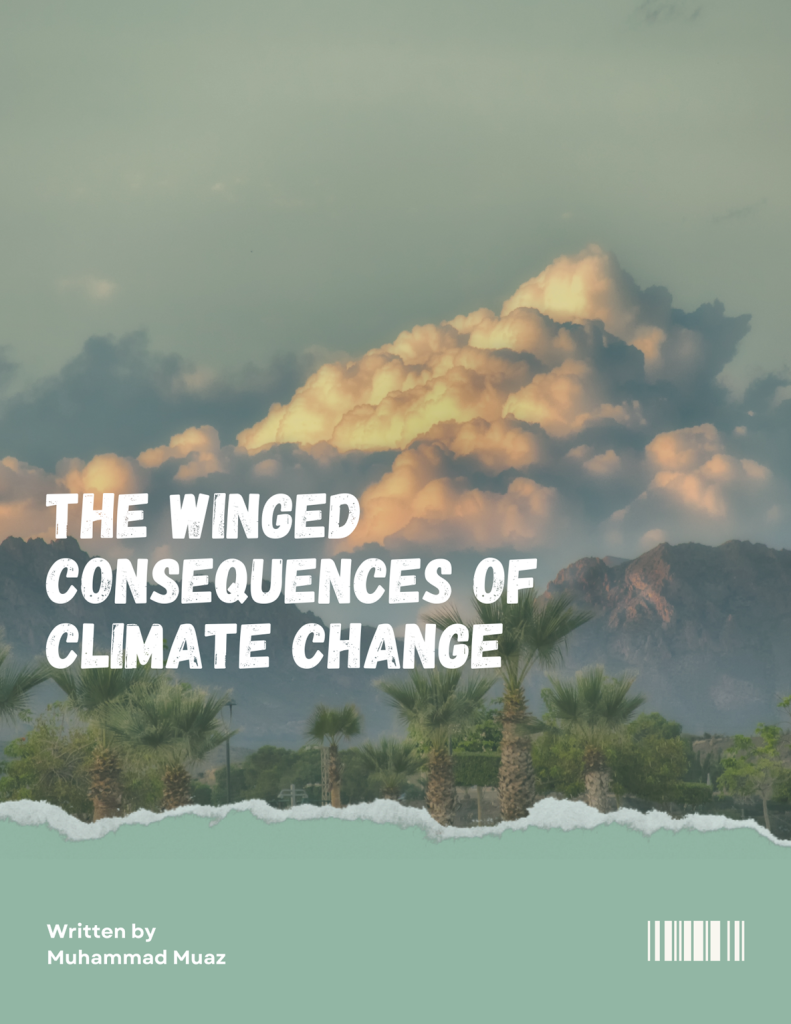
By Muhammad Muaz
As the climate’s canvas shifts, the sophisticated dance of weather patterns touches not only human lives but also leaves its indelible mark on every creature, underscoring the interconnectedness of all life on Earth.
As temperatures rise and weather patterns shift, the consequences echo through the skies, affecting birds, butterflies, bees, and beyond. Some got to the edge of extinction, and many are on the way there because of a sudden change in the habitats in which they survive. From the lush rainforests of the Amazon to the icy expanses of the Arctic, no corner of our planet is immune to the far-reaching consequences of climate change.
As our planet reels from the impacts of climate change, animals on land endure devastating floods and crippling food shortages, while underwater, fish and marine life struggle against rising temperatures and pollution. The very fabric of nature is unraveling as creatures large and small face unprecedented challenges, underscoring the urgent need for action. All of this mismanagement is because of the developing nature of humans, which is not sustainable. These climate changes also disrupt the fragile balance of ecosystems, leading to a decline in biodiversity. For example, the loss of certain species can have cascading effects on the food chain, impacting other organisms that rely on them for survival.
Additionally, the alteration of weather patterns can lead to the spread of diseases and invasive species, further threatening the stability of ecosystems. Including all these, my hobby is getting affected by this problem (changing weather patterns). By hobby, I am a bird fancier (lovebird breeding setup), and I make them breed and try to provide them with a habitat in which they remain happy and breed. Some years before, the breeding season almost started at the end of July and lasted until the end of March. These months are their natural breeding season because proper temperature and humidity (55–65) for the fertility of eggs are in these months, but due to the extreme change in weather, it is now difficult to make the egg fertile and to keep the baby bird alive inside because the humidity level has decreased to such an extent (10–25) that the baby bird dies inside the egg shell. This process is called Dead in Shell. The ratio of eggs in each clutch is 6 to 7, but the ratio of hatching eggs due to less humidity is now 2 to 3, and the remaining eggs fall prey to being dead in shell.
The ramifications of climate change on hobbies extend far beyond mere inconvenience; they strike at the heart of cherished passions, threatening to unravel communities built on shared interests. As temperatures fluctuate unpredictably, the once-affordable joy of maintaining hobbies like bird fancier becomes increasingly elusive. For instance, the plight of bird enthusiasts: the rising costs of artificial humidifiers, driven by energy demands and resource scarcity, cast a looming shadow over the hobby’s accessibility. Not only do bird enthusiasts face financial barriers, but the impact of climate change also disrupts the delicate balance of ecosystems that support bird populations. As climate change casts its shadow over our hobbies, let us band together, resilient and determined, to ensure that our shared passions endure, no matter the obstacles we face. We must strive to find innovative and sustainable solutions to make birdkeeping more affordable and environmentally friendly. Additionally, it is crucial for us to actively participate in conservation efforts and support organizations that work towards preserving bird habitats and protecting their populations. Through collective action, we can help mitigate the effects of climate change and ensure a brighter future for both birds and bird enthusiasts alike.
_____________________
The author is a student of Media and Development Communication at University of the Punjab, Lahore.

